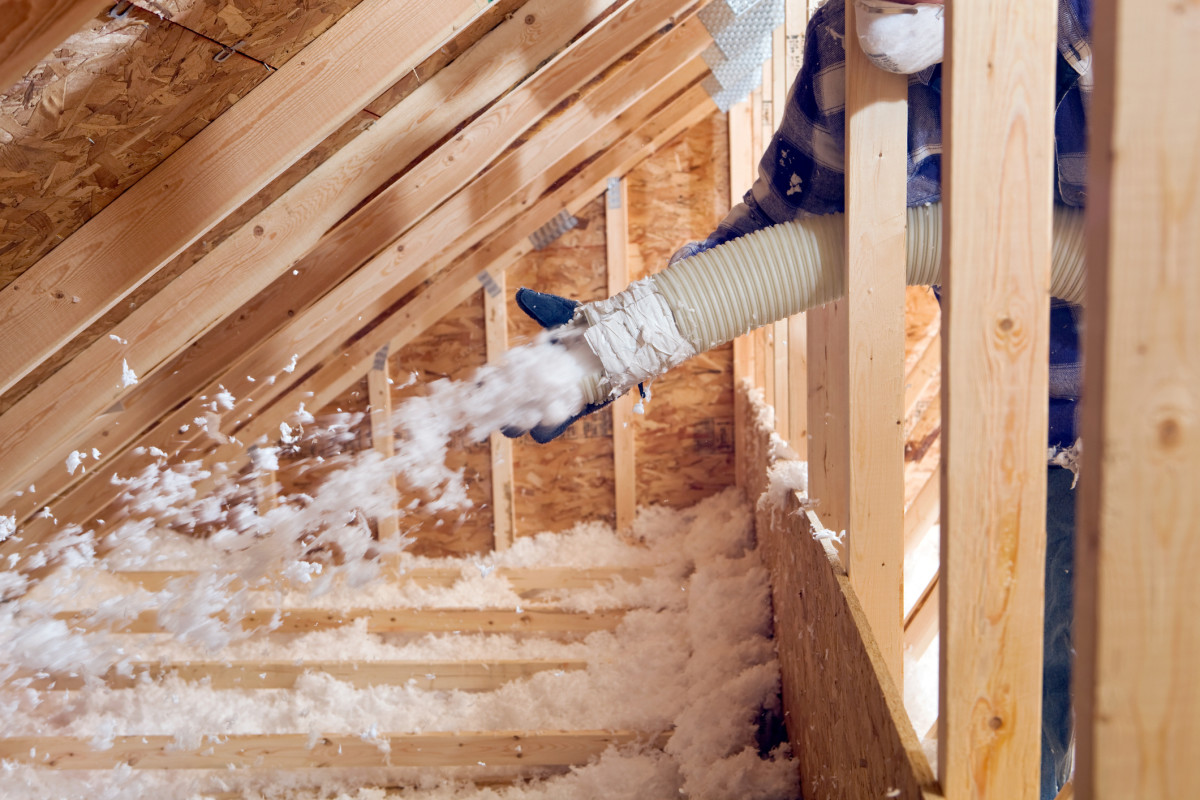Attic insulation creates a thermal barrier that prevents heat transfer between your living space and the outside environment, reducing energy consumption by 15-30% annually. Properly insulated attics maintain consistent indoor temperatures by blocking heat escape during winter and preventing heat infiltration during summer, directly lowering heating and cooling costs while extending HVAC system lifespan.
Best attic insulation installation contractor selects the appropriate material, ensuring proper installation, and meeting the recommended R-value for your climate zone. These factors work together to create a comprehensive thermal boundary that maximizes energy efficiency and improves home comfort year-round.
Fiberglass Insulation
Fiberglass insulation consists of fine glass fibers and comes in two common forms: batts (pre-cut panels) and loose-fill (blown-in). Fiberglass batts fit between standard joist spacing while blown-in fiberglass works well for irregular spaces and retrofits.
According to the North American Insulation Manufacturers Association, fiberglass remains the most widely used attic insulation material, accounting for approximately 65% of the residential insulation market.
Cellulose Insulation
Made from recycled paper products treated with fire retardants, cellulose insulation offers excellent thermal performance while using up to 85% recycled content. Its density provides superior sound dampening properties compared to fiberglass.
BONUS TIP: When installing cellulose insulation, maintain at least a 3-inch clearance around heat-producing fixtures like recessed lights unless they're IC-rated (Insulation Contact) to prevent fire hazards.
Spray Foam Insulation
Spray polyurethane foam (SPF) creates a seamless barrier that both insulates and air-seals in a single application. The material expands upon installation to fill cracks and voids, effectively preventing air leakage.
Rigid Foam Boards
Rigid foam boards provide high R-values in limited spaces and work well in finished attics with sloped ceilings. Common types include expanded polystyrene (EPS), extruded polystyrene (XPS), and polyisocyanurate (polyiso).
Radiant Barriers
Radiant barriers reflect heat rather than slowing conductive heat transfer. They consist of reflective material, typically aluminum foil, that reduces radiant heat gain through the roof by up to 30% in hot climates.
in hot climates.
Installation Methods for Maximum Effectiveness
Proper installation directly impacts insulation performance regardless of the material chosen.
Air Sealing Before Insulation
Air leakage can reduce insulation effectiveness by up to 50%. Before installing insulation, seal gaps around:
- Attic hatches and doors
- Plumbing and electrical penetrations
- Chimney and vent stacks
- Recessed lighting fixtures
- Top plates of interior walls
Proper Depth and Coverage
Insulation should cover the entire attic floor evenly without compressing material or leaving gaps. Depth varies by material and desired R-value:
BONUS TIP: Install depth markers throughout your attic before adding blown-in insulation to ensure consistent coverage. Place these markers every 6-8 feet and mark them with the intended depth to achieve your target R-value.
Ventilation Considerations
Proper attic ventilation works with insulation to manage moisture and temperature. Maintain a 1:300 ratio of ventilation area to attic floor space, with half at the soffit and half at or near the ridge.
Energy Savings and Performance Metrics
Properly insulated attics deliver measurable benefits beyond simple comfort improvements.
Return on Investment
According to the Department of Energy, attic insulation typically delivers the highest return on investment among home energy upgrades, with homeowners recouping costs through energy savings within 3-5 years on average.
Performance Degradation Factors
Several factors can reduce insulation effectiveness over time:
- Moisture exposure
- Compression
- Settling (particularly with blown-in materials)
- Pest infiltration
- Improper installation
Things to Consider Before Making a Decision
Several factors should influence your attic insulation choice and implementation approach.
Existing Home Conditions
Evaluate your current attic setup before selecting an insulation solution:
- Existing insulation type and condition
- Presence of knob-and-tube wiring (requires special considerations)
- Roof leaks or moisture issues (address these first)
- Adequate ventilation systems
- Accessibility constraints
Attic Insulation FAQ
How do I know if my attic needs more insulation?
Check your existing insulation depth and compare it to recommendations for your climate zone. If you can see ceiling joists, your insulation is insufficient. Other signs include high energy bills, uneven temperatures between rooms, and ice dams in winter.
Can I install new insulation over existing material?
Yes, in most cases you can add new insulation over existing material, provided the old insulation is dry and in good condition. Remove any wet, moldy, or compressed insulation before adding new material. Different insulation types can often work together effectively.
Should I remove old insulation before installing new material?
Remove old insulation only if it's damaged, wet, moldy, contaminated with animal waste, or contains vermiculite (which may contain asbestos). Otherwise, adding new insulation over existing material often provides the most cost-effective approach to increasing your R-value.
How often should attic insulation be replaced?
Most insulation materials last 20-30 years before performance degradation requires replacement. However, inspect your attic insulation every 5-10 years for signs of settling, moisture damage, pest intrusion, or compression that might warrant earlier replacement or supplementation.
Make the Right Decision
Proper attic insulation represents one of the most cost-effective energy efficiency upgrades for most homes, delivering both immediate comfort improvements and long-term financial returns. The optimal solution balances initial investment with ongoing energy savings while addressing your specific climate challenges.
Consider hiring a professional spray foam insulation services according to your climate zone requirements, existing home conditions, and budget constraints when selecting materials and installation methods. Remember that proper air sealing before insulation installation significantly enhances performance and prevents moisture-related issues over time.
Author and Reviewer
Author: Jeremy Fields brings over a decade of experience in construction and business to Ozark Eco Foam. With a background in both residential and commercial projects, he focuses on completing each insulation job with accuracy and attention to detail. Ozark Eco Foam reflects his commitment to quality work and practical solutions built on years of hands-on industry knowledge.
Reviewer: Amelia Young contributed insights from 10 years in spray foam insulation. Her review helped sharpen the article's focus on customer engagement and clear service messaging.




 (2) (1).jpg)


Comments